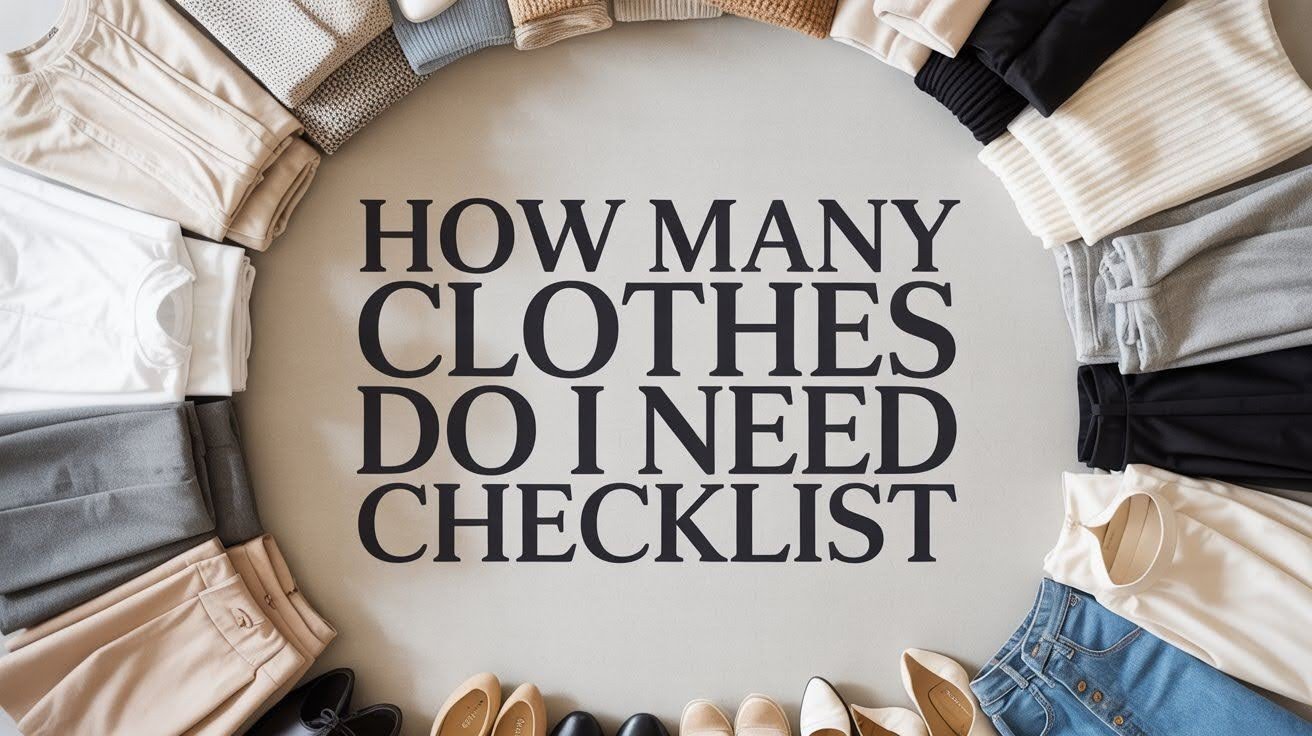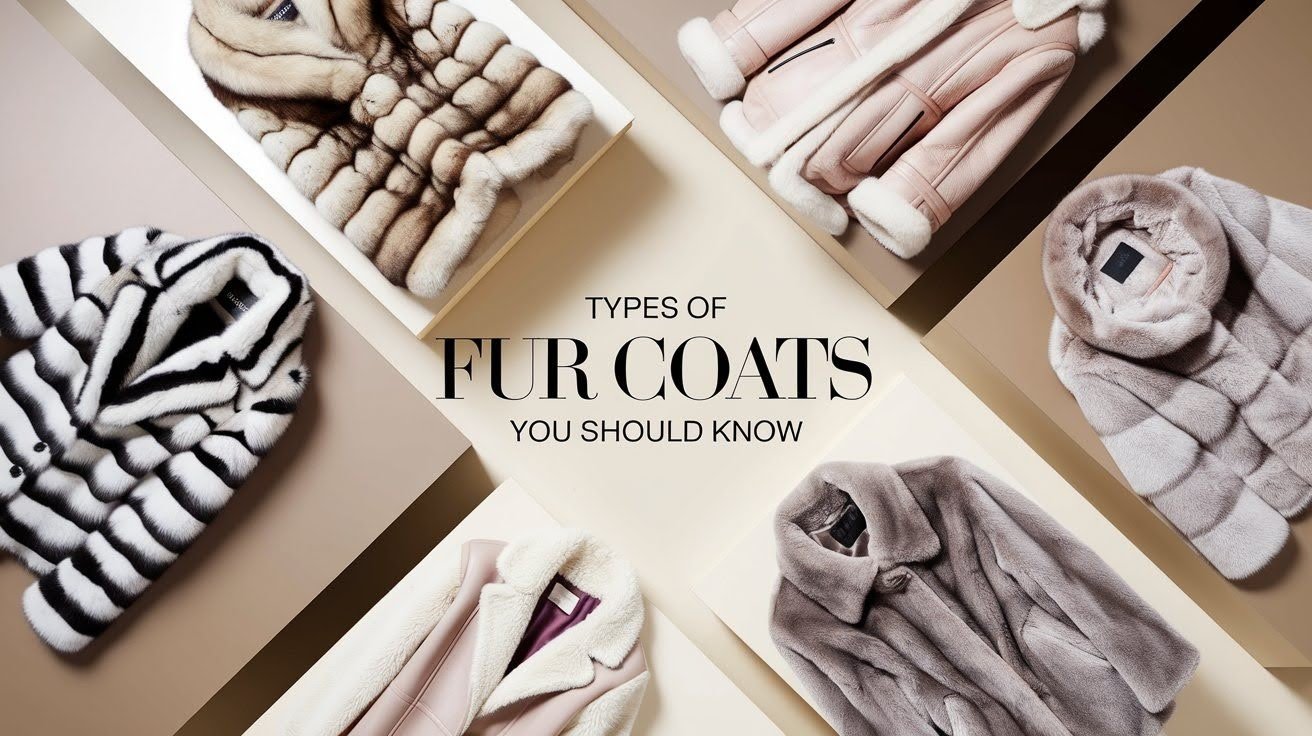Most of us wear only 20% of our wardrobe 80% of the time, yet our closets remain packed with items we rarely touch.
Determining how many clothes you actually need feels surprisingly complex- lifestyle changes, seasonal requirements, and personal preferences all complicate the equation.
Add in marketing messages pushing “must-have” pieces, and it becomes even trickier to find that sweet spot between having enough options and avoiding excess.
This post cuts through the confusion with 13 clear, smart methods to calculate your ideal wardrobe size. You’ll learn practical formulas and assessment techniques that consider your real lifestyle, not hypothetical scenarios.
By the end, you’ll have concrete numbers and strategies to build a wardrobe that truly serves you.
13 Smart Ways to Figure Out How Many Clothes You Actually Need
1. Try the 20-Piece Wardrobe Rule

The “You-niform” concept suggests we can thrive with just 20 carefully chosen pieces. This approach includes 1 coat, 3 jackets, 5 tops, 5 bottoms, 1 dress, and 5 pairs of shoes.
The beauty lies in its simplicity- each item works with multiple others, creating countless outfit combinations.
Pros: You’ll save precious morning minutes and reduce decision fatigue. Your style becomes more cohesive and timeless, while closet clutter becomes a thing of the past.
This method works especially well for busy professionals who want to look polished without the mental overhead.
2. Use the Wardrobe Quotient (WQ) Formula

This scoring system considers your unique lifestyle, climate, laundry habits, and social commitments. Based on your total score, you’ll fall into one of three tiers: Minimalist (30-50 pieces), Balanced (50-80 pieces), or Extensive (80+ pieces).
How to Calculate Your WQ: Rate yourself 1-4 across five key lifestyle factors, then multiply your total by 10. This gives you a personalized wardrobe size target that actually makes sense for your life.
The formula takes the guesswork out of wardrobe planning and provides a scientific approach to closet curation.
3. Count What You Actually Wear

Spend 30 days tracking which items you reach for. Try the “hanger flip” method- turn all hangers backward, then flip them forward as you wear each piece.
You can also use smartphone apps to log your daily outfits. After a month, you’ll have clear data on what truly earns its closet space. This reality check often reveals surprising patterns about your actual preferences versus perceived needs.
4. Use a Packing Mindset: The Two-Week Rule

Think about packing for a two-week trip. What would you actually bring? This exercise reveals how little we truly need for daily life. Most people can create satisfying outfits with surprisingly few pieces.
Add just 1-2 special occasion items to this foundation, and you’re set. The constraint of luggage space forces honest prioritization that applies beautifully to everyday wardrobes.
5. Focus on One Season at a Time

Professional organizers recommend tackling just your current or recently finished season. Don’t overwhelm yourself by evaluating your entire closet at once.
When you focus on winter coats in February or summer dresses in August, decisions become clearer and less emotionally charged.
This seasonal approach prevents decision paralysis and makes the process feel manageable rather than monumental.
6. Break It Down by Category

Examine each clothing type separately. How many shirts do you actually need? What about pants, coats, or dresses? Create ranges for different occasions- workwear, casual wear, and special events.
This category-by-category approach helps you spot where you might be overdoing it. You might find you have 20 casual tops but only 3 work-appropriate blouses, revealing imbalances to address.
7. Follow the One-In, One-Out Rule

After your initial closet cleanup, maintain balance with this simple principle. Every time you bring home something new, let go of something existing. This habit reinforces intentional shopping and prevents future accumulation.
The rule forces you to consider each purchase seriously since it means saying goodbye to something already owned.
8. Let Laundry Frequency Guide You

Your washing schedule should inform your wardrobe size. If you do laundry weekly, 7-10 pieces of each daily essential usually suffices. Do laundry daily? You can get by with fewer items. Wash clothes less frequently? You’ll need more duplicates to bridge the gaps.
This practical approach ensures you never run out of clean clothes while avoiding unnecessary excess.
9. Match Your Clothes to Your Real Life

Think about the “beats of your life”-how you actually spend your weeks. Maybe you work from home for 3 days, go out for 2 days, and relax for 2 days. Your wardrobe should reflect these proportions, not some idealized version of your lifestyle.
Stop buying cocktail dresses if you attend one formal event per year, and invest in comfortable home-office attire instead.
10. Use the 80/20 Rule to Your Advantage

Identify that magical 20% of clothes you wear 80% of the time. These are your wardrobe workhorses-the pieces you consistently reach for and feel great wearing. Build your foundation around these favorites rather than the items that just look good on hangers.
Once you recognize your true style preferences, you can shop more strategically for similar pieces.
11. Create Mini Capsules Within Your Closet

Organize separate sections by season or function-work clothes, weekend wear, event outfits. Give each mini-capsule its own target count. This prevents you from accumulating too much in any single category while ensuring you have appropriate options for all occasions.
Each mini-capsule should function independently, making outfit selection faster and more intuitive.
12. Give Yourself 1-2 “Wildcard” Pieces

Not everything needs to be perfectly practical. Keep one “fantasy” piece or purely fun item without guilt. Maybe it’s that sequined top you rarely wear or the vintage jacket that makes you smile.
These pieces add joy and personality to your wardrobe. Having permission to keep something impractical prevents the feeling of living in a boring, overly utilitarian closet.
13. Trust Your Gut – and Your Closet Space

After applying these methods, do a final gut check. Do you feel overwhelmed by choices, content with your options, or limited by too few pieces? Let both your physical space and emotional clarity guide the final decision.
Your wardrobe should feel right for your specific life and space. Remember, the perfect wardrobe size isn’t a magic number- it’s whatever allows you to get dressed confidently each day.
When opening your closet feels manageable rather than stressful, you’ve found your sweet spot.
Conclusion
Finding your ideal wardrobe size isn’t about following someone else’s formula- it’s about understanding your unique lifestyle, habits, and space constraints.
These 13 methods provide different lenses to examine your clothing needs, from the practical 20-piece rule to the data-driven Wardrobe Quotient formula.
Start with one or two approaches that resonate most with your situation. Maybe you’ll track your actual wearing patterns for 30 days, or perhaps you’ll create mini-capsules for different life functions. The key is being honest about how you really live, not how you think you should live.
Your perfect wardrobe should make getting dressed feel effortless and authentic. When you can open your closet and feel confident about every option inside, you’ve achieved the right balance for you.
Frequently Asked Questions
How many clothes does the average person actually need?
Most people can function comfortably with 30-80 clothing items, depending on their lifestyle and climate. The key is focusing on versatile pieces that work together rather than accumulating items that only serve one purpose.
What’s the minimum number of clothes for a functional wardrobe?
A truly minimal wardrobe can work with as few as 20-30 pieces, including basics like 5-7 tops, 3-5 bottoms, and essential outerwear. This approach works best for people with consistent routines and access to regular laundry facilities.
How do I know if I have too many clothes?
If you regularly feel overwhelmed when choosing outfits or consistently wear only a small portion of your wardrobe, you likely have excess items. A good test is the 30-day tracking method-anything unworn in a month probably isn’t serving you.
Should I count undergarments and accessories in my total clothing count?
Focus primarily on your main clothing pieces like tops, bottoms, dresses, and outerwear for your core count. Undergarments, socks, and basic accessories are necessities that don’t significantly impact decision fatigue or closet overwhelm.
How often should I reassess my wardrobe size?
Review your wardrobe seasonally or whenever your lifestyle changes significantly, such as a new job or move. This prevents accumulation over time while ensuring your clothes still match your current needs and preferences.








